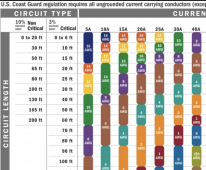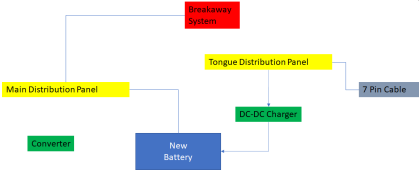I know a tiny bit about electrical and a whole lot less about solar, that said, I drew this up from different layouts I saw on Victrons website for a possible install in my camper, could someone kindly look at this and tell if I got any of this right.
4 @ 12v 100 watt solar panels
2 @ 100amp Battle Born Batteries
Victron Multiplus Compact 12/2000/80-50
Victron MPPT Not sure what size I need yet
Victron BMV 712
Victron Cerbo GX
Victron GX Touch 50
Victron Smartshunt 500A
I was told by a Battle Born tech that I could hook up my existing power, 12awg, from the 7 pin trailer plug into the system for a minuscule charge from the tow vehicle and I would in no way harm and of the solar components, truck battery or alternator, is this true?
15 years ago I put a solar panel on the roof and ran a 12AWG wire to my control panel, that run is about 7' long, can I use his with this setup or do I need to up grade to 10AWG size wire that I would be using everywhere else.
Your help is greatly appreciated,
4 @ 12v 100 watt solar panels
2 @ 100amp Battle Born Batteries
Victron Multiplus Compact 12/2000/80-50
Victron MPPT Not sure what size I need yet
Victron BMV 712
Victron Cerbo GX
Victron GX Touch 50
Victron Smartshunt 500A
I was told by a Battle Born tech that I could hook up my existing power, 12awg, from the 7 pin trailer plug into the system for a minuscule charge from the tow vehicle and I would in no way harm and of the solar components, truck battery or alternator, is this true?
15 years ago I put a solar panel on the roof and ran a 12AWG wire to my control panel, that run is about 7' long, can I use his with this setup or do I need to up grade to 10AWG size wire that I would be using everywhere else.
Your help is greatly appreciated,






